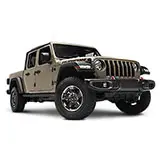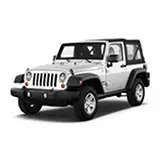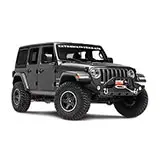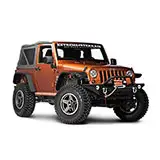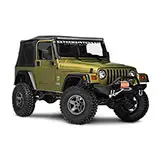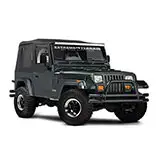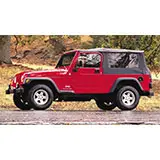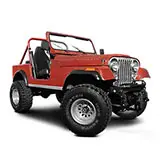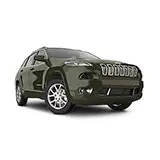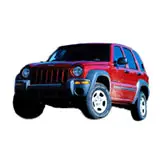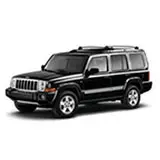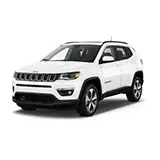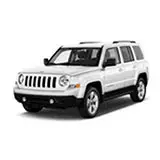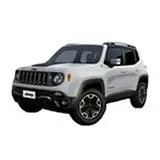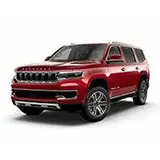
The death wobble sounds like a scary thing because, well, it is. The Jeep community is no stranger to the dread of experiencing this. In fact, it is a common worry.
What is the death wobble?
When you scour online Jeep forums, you’ll find shared experiences of fear over a violent wheel shake that usually happens after hitting a bump at high speeds. Reports say that the death wobble feels like the tires are going to come off while the whole vehicle violently vibrates.
Usually, this problem arises when there is an issue with the steering and the font suspension system. According to online accounts, the death wobble mostly happens to modified Jeeps because of the alteration of the suspension systems. Furthermore, forums point to instances where a Jeep runs at over 30 miles per hour as the most common premise when the death wobbles usually occur.
Which Jeeps get the most death wobble incidents?
The death wobble can happen to any vehicle, but in the case of Jeeps, certain models get more death wobble reports than others. Wrangler JK, Wrangler LJ, Wrangler TJ, Grand Cherokee WJ, Grand Cherokee, and Grand Cherokee ZJ are some of the most reported models.
The Wrangler is the most commonly reported Jeep for death wobble incidents. However, despite the number of reports, no actual fatal accidents happened following a case of death wobble. The National Highway Transportation Safety Administration has also never issued a recall over such incidents.
And back in 2012, Chrysler issued a service bulletin to owners of solid axle vehicles to keep the suspension system in top shape, but the company never said anything about the death wobble.
What causes the death wobble?
Jeep switched out the leaf springs for the four-link suspension systems in both the Cherokee in 1984 and the Wrangler in 1997. This allowed for better ride and wheel travel. However, this suspension system has links that require bushing at each end, and over time, they wear out. Plus, wearing out is very common for parts like unit bearings, ball joints, and tie rod ends when they have to work with heavy tires and wheels. Wearing out parts like steering components, suspension links, and axles all contribute to the chances of getting death wobbles.
How to fix death wobble?
When you get the death wobble, let off the gas and gently step on the brakes to slow the vehicle down. This is one thing you can do when you do get the wobble, but if you want to avoid any encounter with the death wobble, you can do the following.
Checking and replacing worn components
The first thing you need to inspect is the track bar. A loose trackbar is the culprit of most death wobbles. The track bar is what locates the axle from left to right under the vehicle so it makes sense for this to be the first thing you check out.
Wobbling can be caused by a single loose bolt or a bad bushing. Inspect the mounting points and bushings. Make sure to tighten the bolts to about 125 lbs/ft.
Next, check the ball joints. If they are bad, they need to be replaced. Then, check on the tie rods. If the ends wiggle when you move the wheel back and forth and the rod stays still, it needs replacement.
Finally, a bad wheel bearing is another cause of death wobbles. Elevate your front tires and wriggle them. If you feel movement inside or hear clunking sounds, your tire has a bad wheel bearing and needs to be fixed.
The death wobble doesn’t only happen to Jeeps. Any vehicle with a solid front axle with 4-link coil spring suspension is prone to death wobble However, it’s on a case-to-case basis for every jeep out there. The first thing you have to rule out is worn-out components. They are usually what causes this violent shaking. But, you will find scenarios where the bushings, the ball joints, and the bolts are perfectly fine but the Jeep still gets the death wobble.
Trying other remedies specific to the problem
In such a case, take the inspection a little further. Remember that in vehicles with a solid front axle, when the axle cycles are up, the control arms push the axle forward while the track bar pushes the axle to the right. These forces counter each other. And when you hit a bump with your right tire causing you to under-accelerate and unload the front suspension, it’s the perfect recipe for violent shaking.
This is exactly what happens to your vehicle when you lift it. In such a case, an adjustable trackbar is necessary. What it does is to recenter the axle to the chassis.
With Jeeps that have the inverted Y-steering linkage, the constant toe changes on jounce and rebound make the death wobble a steady possibility. You can address this by having a true crossover steering linkage with adjustable drag links. You need to alight the pitman arm parallel to the centerline of the vehicle. Again, lifting your vehicle will cause you to lose that, and a steering stabilizer will help.
Rebalancing the wheels and aligning the steering are also options to address the death wobble. Lifted vehicles require specific adjustments to the steering to make sure that steering is responsive and easier to control. Make sure to keep that in mind when you get your vehicle lifted.
Conclusion
There are many possible reasons for a death wobble, but what it does emphasize is the importance of thorough maintenance. A single bad ball joint or bushing can send you gripping the string wheel when you hit a bump. After you address the death wobble issue on your Jeep, make it a point to maintain your vehicle in good shape.

